Not sure how to get started in Apple Numbers on Mac? For business and personal use, Numbers is a handy spreadsheet application that comes with macOS. But there’s more reasons to use Numbers – it offers useful features that might just make it one of your favorite go-to apps.
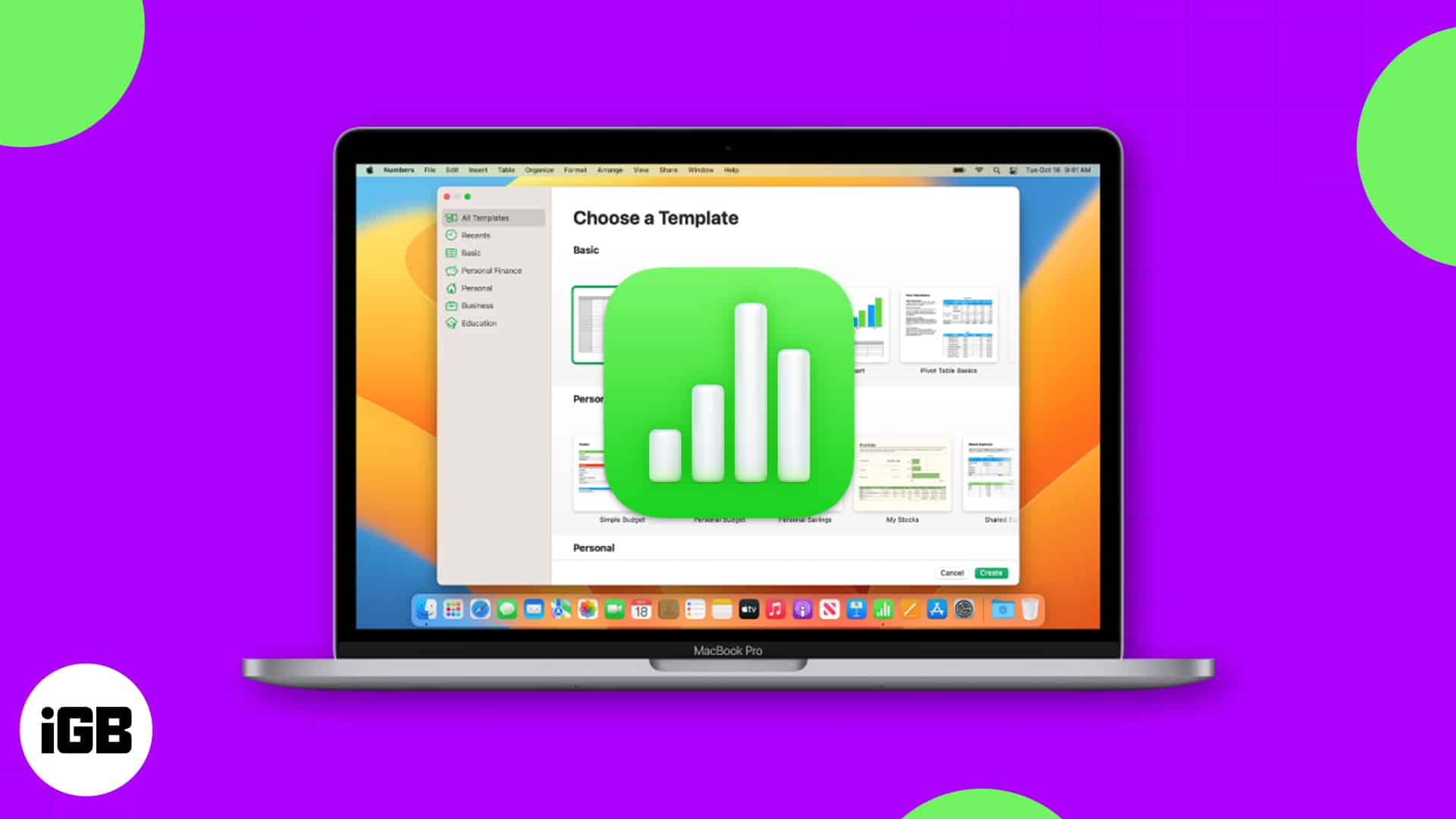
We’ll walk you through several tips for using Apple Numbers on Mac. From starting with a template to applying conditional highlighting, open Numbers and follow along!
1. How to start with a template in Numbers
If you want a jumpstart on your Numbers spreadsheet, you can start with a template. You’ll find a decent selection of personal, business, and educational templates for common tasks.
- Launch the Numbers app on your Mac and select New Document.
If you already have the app open, go to File in the menu bar and choose New. - Use the navigation on the left side of the subsequent screen to pick a category or choose All Templates to review them. You can create everything from a task checklist to a household budget to a class schedule.
- When you see the one you want, select it and click Create at the bottom right.

Once the template opens, simply add your own data. You can also make edits to the template formatting to tailor it to your needs.
2. How to sort data in Numbers
When you have a spreadsheet that includes a lot of data, manually manipulating it can be time-consuming and you run the risk of errors. Instead, you can use the sort feature for the data in your sheet.
- Select the sheet you want to sort, click the Organize button at the top right corner, and choose the Sort tab.
- If you only want to sort particular data, select those rows and then pick Sort Selected Rows in the top drop-down box in the sidebar. Otherwise, you can choose Sort Entire Table.
- In the Sort by section, pick the column you want to sort by in the drop-down box. Beneath, you can then choose Ascending or Descending order.
- If you’d like to sort by another column, choose it along with the order below the first sort settings you pick.
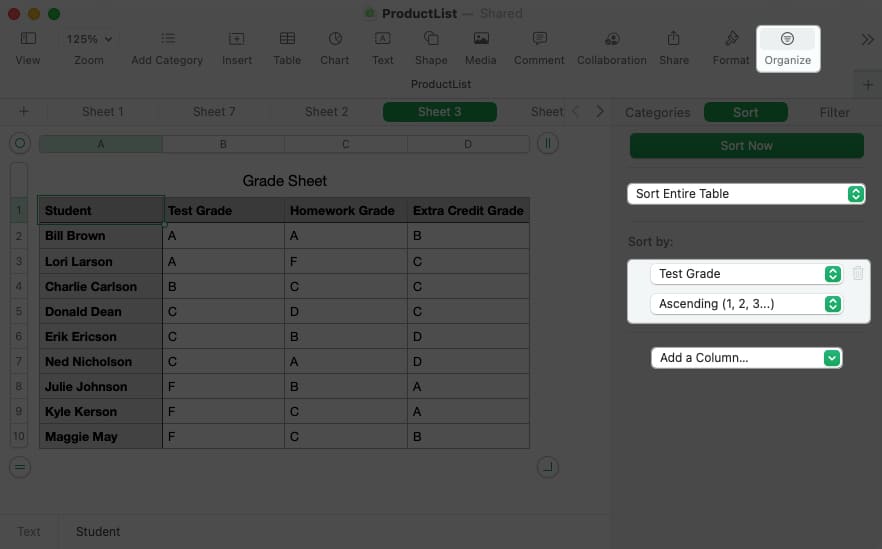
- You should see your data automatically sorted, but if you continue to add more columns to sort by, click Sort Now at the top of the sidebar.
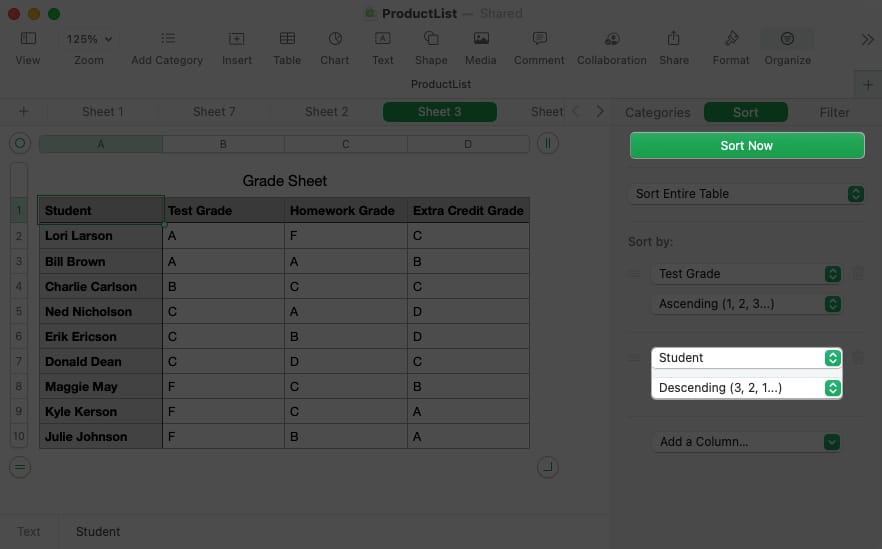
3. How to add a link in Numbers
Maybe you’d like to include a reference to another sheet or a quick way to visit a website. You can add a link in Numbers to a sheet, email address, web page, or phone number. Then, with a simple click of the link, you can open the sheet, compose an email, visit the page, or make a phone call.
- Select the content within the cell you want to link by double-clicking the text or dragging your cursor through it. If you only select the cell, you’ll notice that the link options will be
- Go to Format in the menu bar, move your cursor to Add Link, and choose an option from the pop-out menu. unavailable.
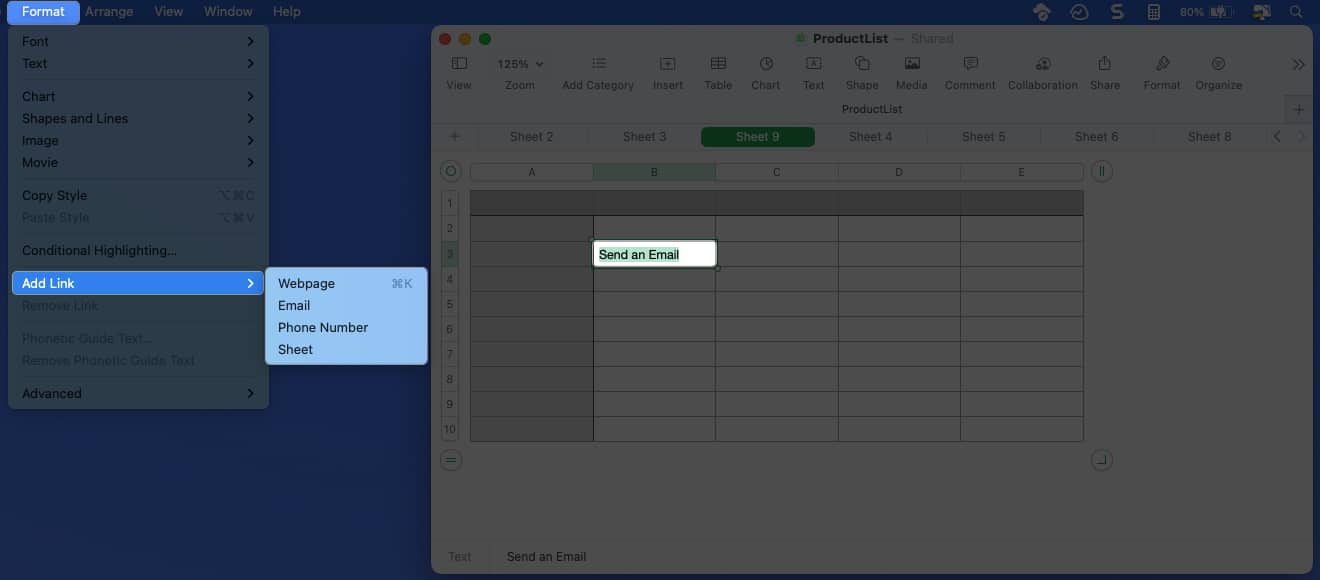
- When the small window appears, add the information for the link. For example, enter the URL for a web page or number for a phone call. You can also adjust the Display text if necessary.
- Use the button on the bottom right per the type of link you select to apply the hyperlink to the content.
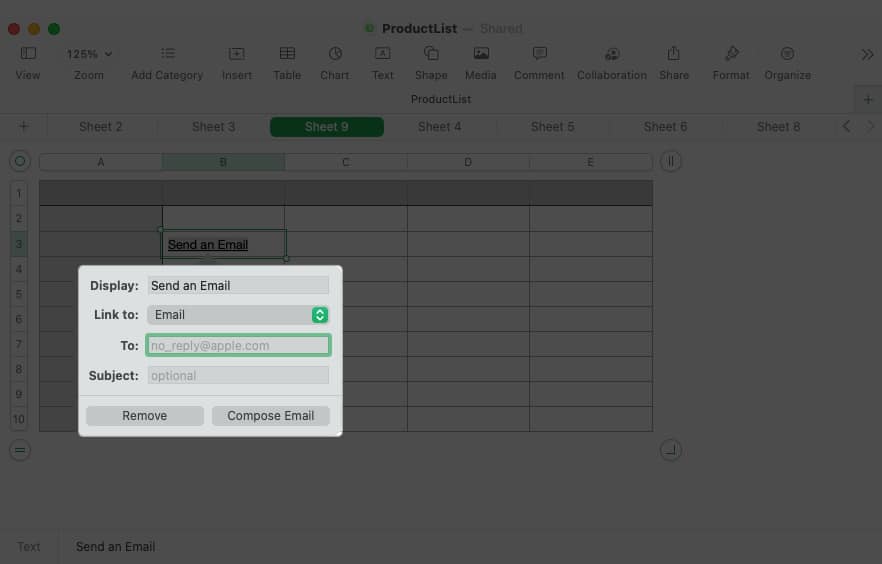
To make changes to the link or remove it later, select Format in the menu bar and pick Edit Link or Remove Link.
4. How to create a chart in Numbers
Charts and graphs are terrific visuals for displaying data. They allow you to see highs and lows, trends, or patterns at a glance. In Numbers, you can choose from 2D, 3D, and interactive charts.
- Select the data you want to include in the chart.
- Either click the Chart button in the toolbar or Insert in the menu bar and move to Chart.
- You’ll see all of the chart types you can pick from including bar, column, pie, scatter, and more. Choose the type and you’ll see the chart pop right into your sheet.

- When you edit the data in your sheet, your chart automatically updates.
- To customize the appearance, select the chart and click Format on the top right. You can then choose a different color scheme, adjust the axes, add data labels, and more.
- To change the data you want to include, select the chart and click Edit Data References at the bottom of the chart.
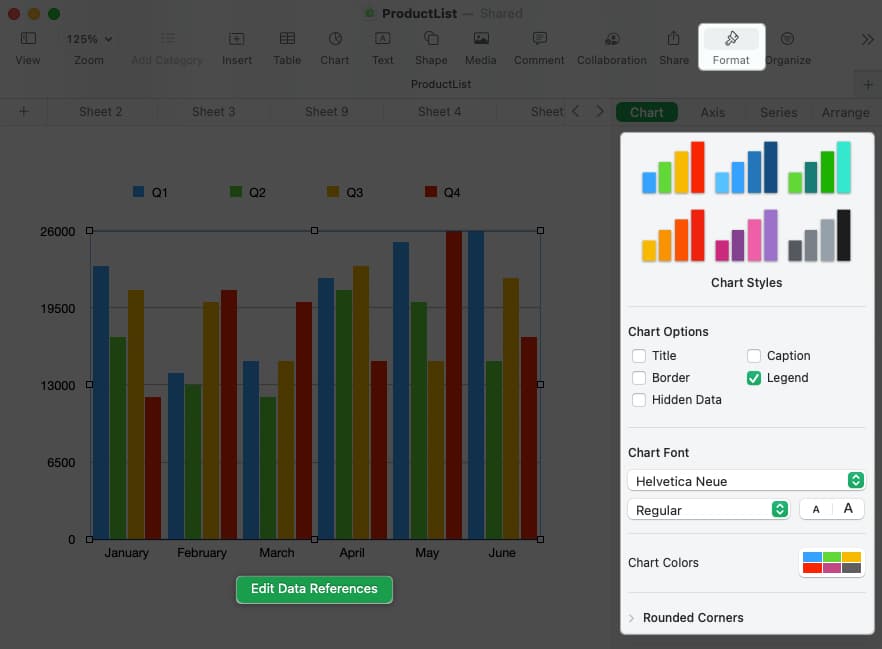
5. How to perform simple calculations in Numbers
One of the most common things you’ll likely do in your Numbers sheet is to perform calculations. Luckily, you can add, average, or get the maximum amount from a data set in just a couple of clicks.
- Go to the cell where you want the results of the calculation.
- Either select Insert in the toolbar or use Insert in the menu bar to choose Formula.
- Then, pick the calculation you want to use.
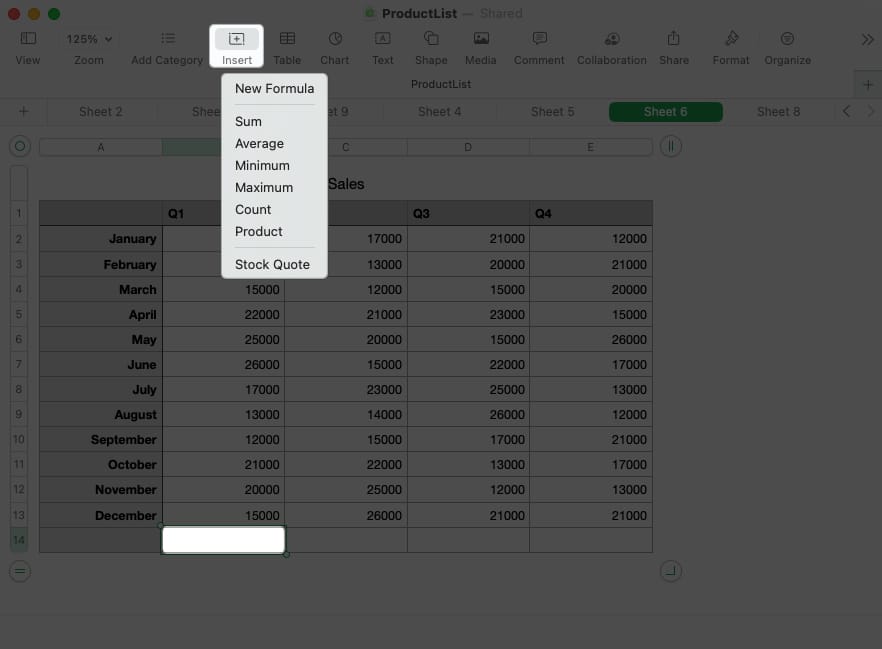
You’ll see Numbers use the values in the column if you use the bottom cell or row if you use the far-right cell to perform the calculation for you.
To edit the formula for the calculation, double-click the cell to display the formula bar. Then, make your changes and use the checkmark in green to save it.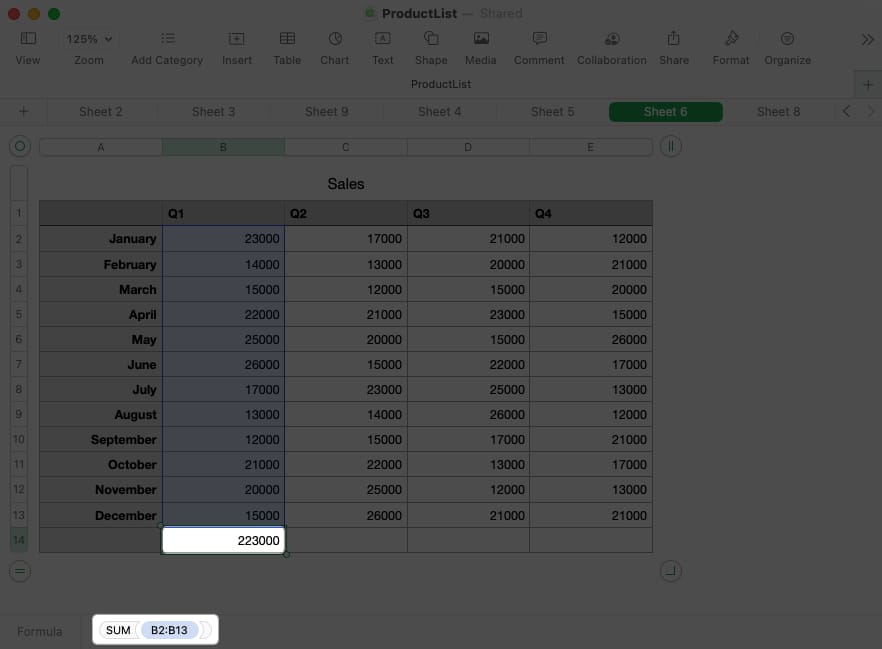
View calculations at a glance
Maybe you want to use one of these calculations, but not necessarily add it to your sheet. Instead, you can display one or all of them at the bottom of the window.
- Select a group of cells containing values in your sheet. Then, click the gear button that displays in the bottom right corner of the window.
- Choose the calculations you want to display which places a checkmark next to each one.
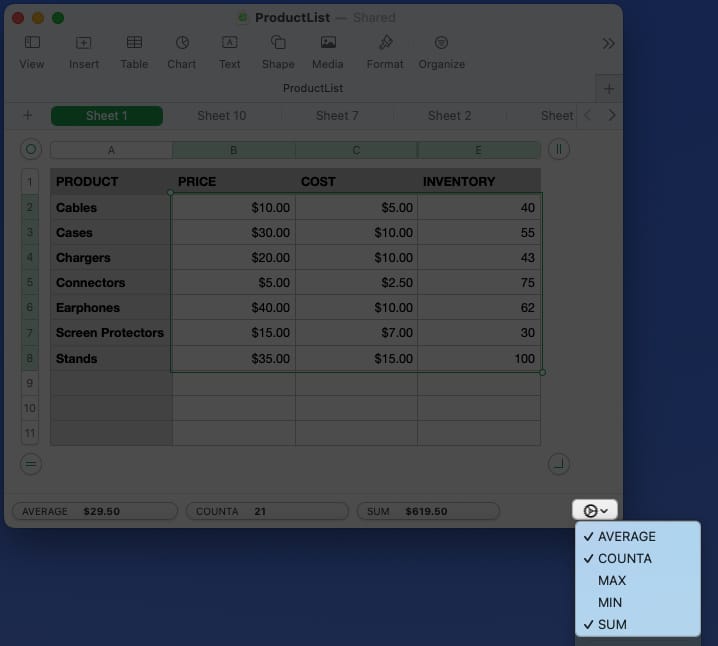
- Then, when you select one or more cells in the sheet, you’ll see the calculation(s) at the bottom with nothing more than a glance.
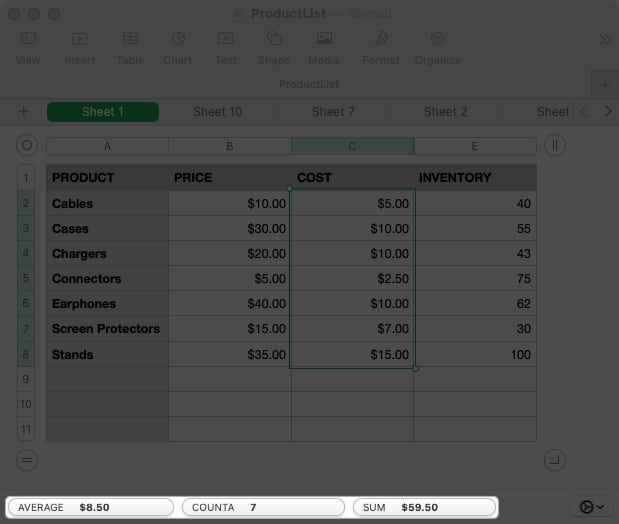
6. How to insert formulas in Numbers
When you perform the simple calculations described above, those equations use formulas. With Numbers, you can go beyond the basics by entering advanced formulas and using a variety of functions.
Because formulas and functions in Numbers could spawn a super lengthy article, we’ll just cover the essentials here.
- To enter a formula, type the equal sign (=) in the cell to display the formula bar.
- Type the formula you want to use into the formula bar. If you start your formula with a function, you’ll notice suggestions at the bottom. If you choose one, you’ll receive prompts inside the formula bar that help you complete the formula correctly. Simply replace the prompts with your data.
- Additionally, you can open the Format sidebar to get more help with functions. You can search for one, get details on its uses, and click Insert Function to place it in your formula.

- When you finish entering the formula, press the checkmark in green to apply it and obtain your result.

Tip: If you want a quick view of the formula, select the cell, and you’ll see the formula displayed at the bottom of the window.
Become an iGeeksBlog Premium member and access our content ad-free with additional perks.
Formula and function examples
Let’s look at a couple of common formulas using functions in Numbers.
Using the IF function, you can return a result for a true or false condition. For example, if the amount in cell B2 is greater than 20,000, return Yes, otherwise, return No. Here’s the formula you’d use and how it appears in the bar at the bottom: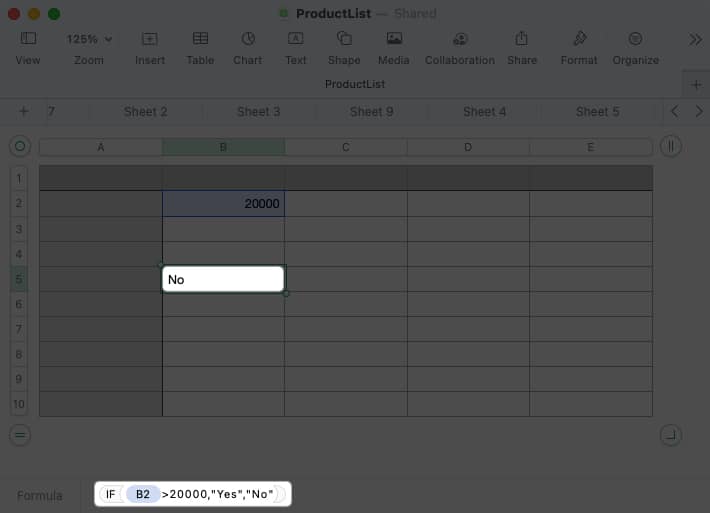
IF(B2>20000,”Yes”,”No”)
Using the CONCAT function, you can combine text from different cells. For instance, you can join the first name in cell B2 and the last name in cell C2 with the result in cell D2. You can also include a space (within quotes) between the names. Here’s the formula and how it looks in the bar at the bottom: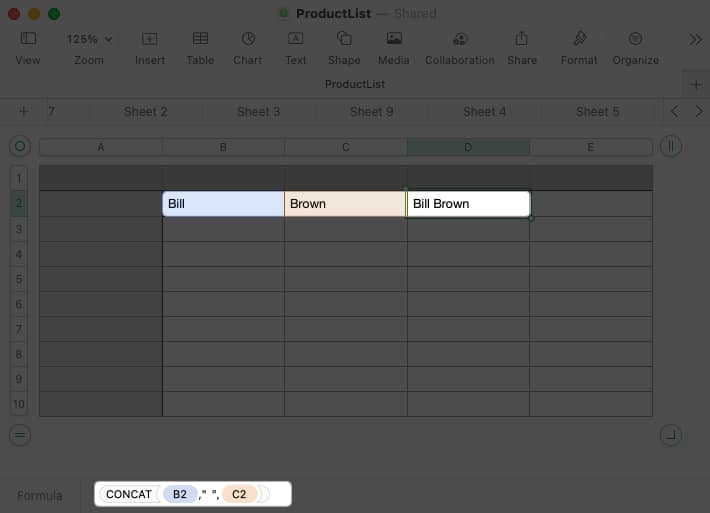
CONCAT(B2,” “,C2)
7. How to apply cell formatting in Numbers
Depending on the type of data you enter in Numbers, you may want or need to format it as such.
For instance, you might want numbers formatted as currency, a percentage, or a date. While Numbers offers an Automatic formatting option, you can choose and customize particular data types.
- Select the cell or range of data and click Format to open the sidebar.
- Go to the Cell tab and open the Data Format drop-down box to pick the data type.
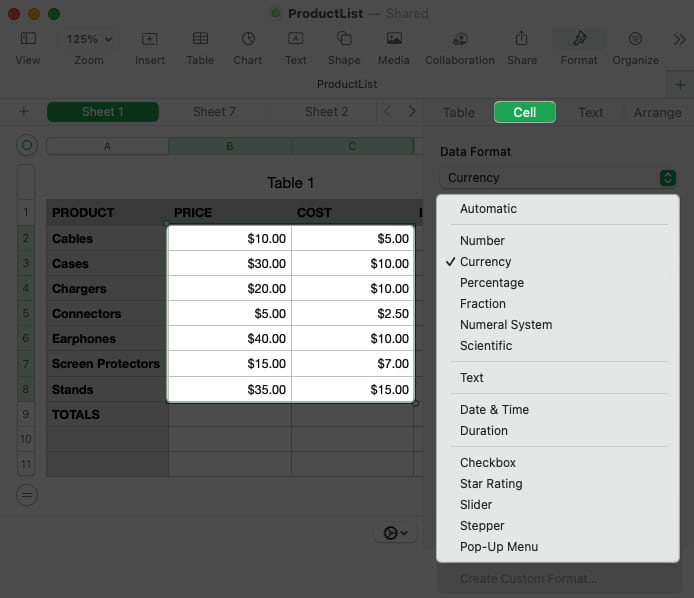
- Optionally, you can adjust the additional formatting that displays beneath the type. For example, if you choose Currency, you can choose the currency type, change the decimal places, and include a thousand separator.
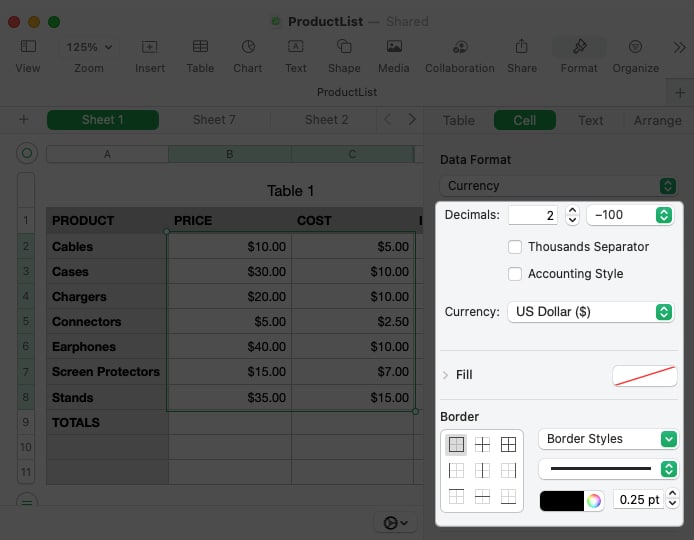
8. How to use interactive formatting in Numbers
Along with formatting the data, you can format a cell with an interactive item like a checkbox or slider. This gives you a quick and easy way to mark off tasks, choose values, or add a rating.
- Select the cell or range and click Format to open the sidebar.
- Go to the Cell tab and open the Data Format drop-down box to pick one of these interactive formatting types at the bottom of the list.

- Checkbox: Click the box to place a checkmark in it. When checked, the value is True and when unchecked, the value is False.
- Star rating: Select a dot to mark that number of stars for a rating system. You can choose from zero to five stars.
- Slider: Use a vertical slider to select a value. After you choose Slider in the drop-down box, add the minimum, maximum, and increments. You can also pick a specific data format such as number, currency, or percentage.
- Stepper: A Stepper works like a Slider except you use arrows to increase or decrease the value.
- Pop-up menu: Create your own pop-up menu by adding the items in the sidebar. Then, select the arrow to the right to open the pop-up menu and pick an item.
9. How to use autofill in Numbers
Autofill is a fantastic feature that can be a true time saver. With it, you can drag from one or more cells to fill additional cells with the same value, a pattern, or a formula.
The best way to explain how to use autofill is with a few examples.
Autofill the same value
Here, we want to copy the same value down to the last three cells in the column. When you select the cell, hover your cursor over it and you’ll see a yellow dot display. Drag that dot downward and release to fill the cells with the same value.
Autofill a pattern
Next, we want to list the months of the year. Rather than typing them all manually, you can select the cell containing “January” and drag the yellow dot down to fill in the remaining months.
Autofill a formula
When you enter a formula or calculation into a cell that you want to use in another, you can copy and paste the formula with autofill. Numbers automatically updates the cell references so that they apply to the correct cells.
Here, we have our total for Q1. We drag the cell with that SUM formula to the cells across the row to obtain the totals for the remaining quarters.
10. How to apply conditional highlighting in Numbers
With conditional highlighting, you can format your data automatically when it meets certain conditions that you set up. As examples, you can make numbers less than another number a certain font color or dates after a specific date have a cell fill color.
- Select the cells you want to apply the formatting to and click Format to open the sidebar.
- Go to the Cell tab and pick Conditional Highlighting.
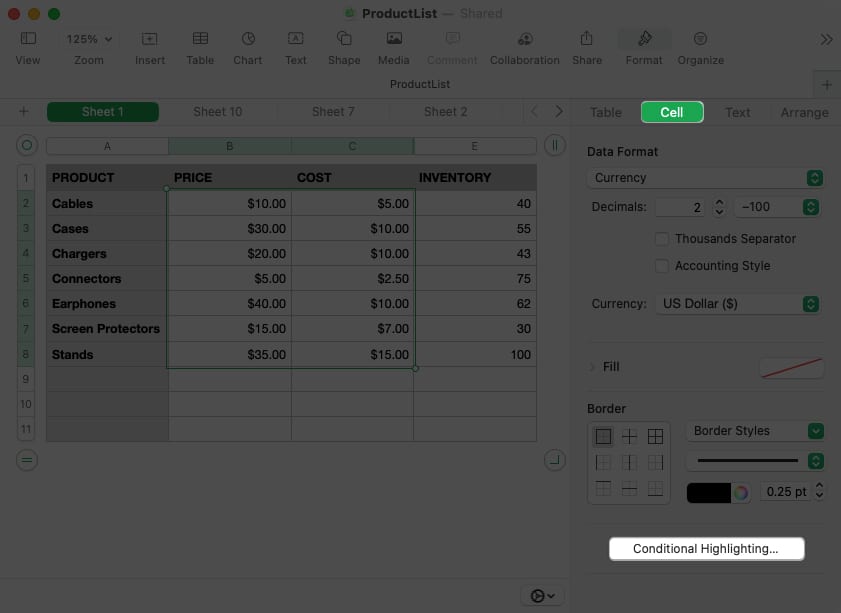
- At the top, click Add a Rule. Choose the rule type on the left of the pop-up box.
You can pick Number, Date, Text, Duration, or Cell. - You’ll then see the available conditions for that cell type to the right. Pick an option.

- Then, complete the remaining details for the rule in the sidebar including any additional variables and the formatting you want to apply.
- Click Done when you finish.
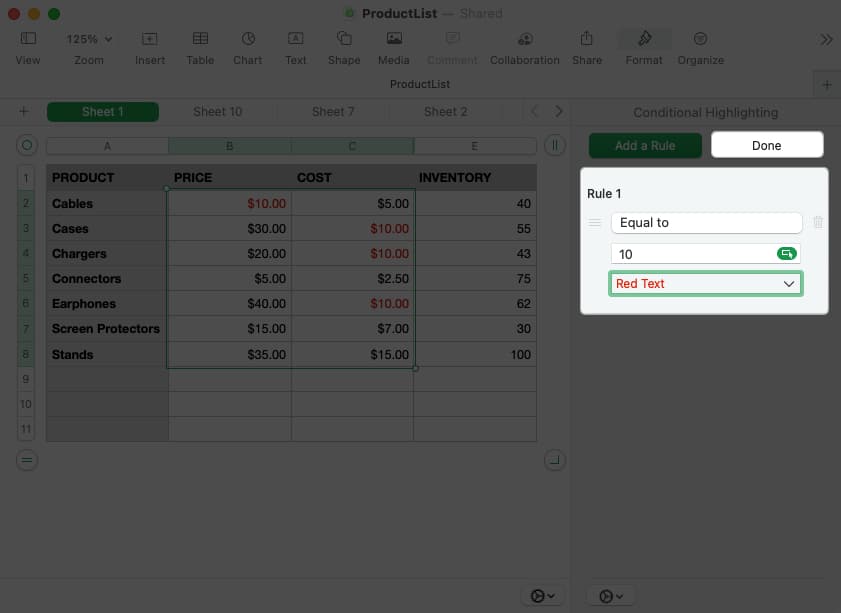
- To view, edit, or remove a conditional highlighting rule, reopen the Format sidebar and pick Show Highlighting Rules on the Cell tab.
Let’s look at an example:
Here, we’ll format numbers that equal 10 in red font. Start by choosing Number and Equal To.
Then, add the value “10” and choose Red Text in the format drop-down list.
Now, whenever a value in our dataset is 10, we’ll see the red font pop, making it easy to spot.
Do more with Numbers on Mac
If you’re a Mac user and want to do more with Apple Numbers, these tips should help you get started. And if you have tips of your own you’d like to share or would like to see us cover something specific for Apple Numbers, let us know!
Read more:
